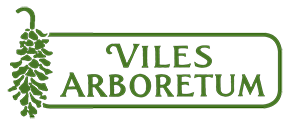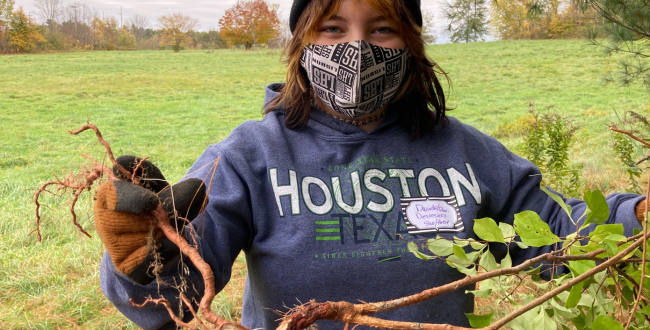Spring is one of the best times to get a handle on invasive species. For herbaceous invasives such as shrubby honeysuckles and bittersweet, they are just beginning to leaf out making them easy to identify without the added risk of spreading seeds that we get in the fall. For our more mobile invasives including insects such as the brown-tail moth, most have not yet left their dormant stages at the start of spring, making it easy for us to get ahead of them before they begin to disperse. Taking the time to control invasives and encourage native species in your own backyard will help create higher-quality habitat for wildlife, and reduce your long-term maintenance costs on your landscape.
Shrubby Honeysuckles:
Often planted for their sweet-smelling white flowers that bloom in the late spring and early summer, shrubby honeysuckles from Europe and Asia are famous for their ability to take over the understory in areas where they are not native. While they are abundant producers of little red berries, these berries should not be considered a suitable replacement for native fruits as a wildlife food. Its advantage over native understory species comes from its ability to leaf out early and quickly, giving it a head start on its growing season. Keep an eye out for these rapidly greening shrubs with hollow stems. You can effectively control this species by cutting it back three or more years in a row, or by pulling it out by the roots.
Burning Bush:
Usually intentionally planted as a ornamental species, burning bush is famous for its vibrant-red fall foliage. While easily distinguished in the fall, this species is also easy to spot just before leaf out by looking closely at its stems. This species has very unique and pronounce "corky wings" that run along its stems. Sometimes advertised as "sterile", these shrubs are anything but. Burning bush can travel without the spreading of seed by sending up runners... Life finds a way. This continuous sprouting from runners allows this species to rapidly overwhelm understories. Continuous cutting back and pulling out by the roots is advised. We also recommend replacing with one of our many beautiful native species known for its fall colors such as chokeberry.
Round-leaf Bittersweet:
This aggressive climbing vine was historically planted as an ornamental. It's bright red berries encased in a unique yellow papery husk are vibrant and attractive when used for fall wreaths and centerpieces. Native to eurasia, this plant can be especially destructive when grown outside of its native range. Here in Maine, this species frequently causes severe damage to the trees it grows on, breaking limbs and and smothering the canopies. When removed in the fall, berries often drop off and spread to new locations. Spring is the ideal time to remove this species, as it is best removed by pulling up as much of the root system as possible. The soft spring ground allows for more effective removal of roots. Use of the vines for basket or wreath making can help effectively control overgrowth of bittersweet in some areas although we strongly encourage you to harvest it before berries appear to avoid spreading it to new locations. Use native alternatives such as winterberry to add a pop of color to wreaths and arrangements in the fall and winter months.
Brown-tail Moth:
Early spring and winter are the best times to manage brown-tail moth. Winter web clipping is one of the most effective and least environmentally impactful methods of controlling BTM. Web removal is simple and can be done with a set of clippers and a bucket of soapy water. Placing nests in warm soapy water destroys the proteins in the silk, causing the caterpillars to become vulnerable to the water. This is the safest and most effective way of disposing of nests after they have been removed.


